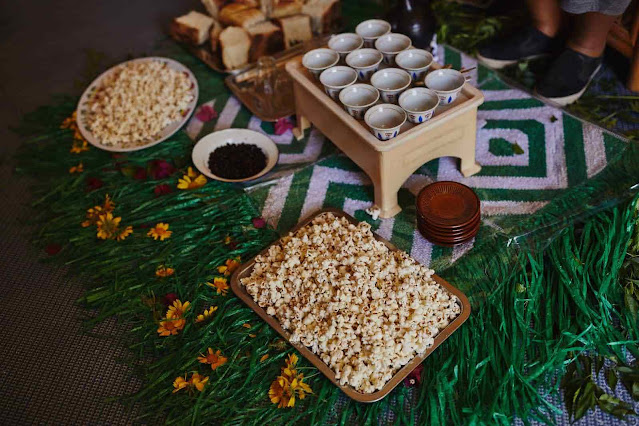Buna Ceremony
By: Rediet Shiferahu
History of Ethiopian coffee
Ethiopia is the birthplace of authentic, flavorful coffee and coffee culture. The most famous tale of the coffee bean's origin begins in 700 AD with Kaldi and his goats. Legend says that Kaldi, the goat herder, first discovered coffee beans. The story goes that Kaldi found coffee after finding out that his goats were so energetic after eating red berries from a particular tree that they did not want to sleep at night. Kaldi shared his findings with the local monastery's abbot. He made a drink with the berries and discovered that it kept him conscious during the long hours of evening prayer, And the knowledge of the energizing berries started to spread.
Ethiopian Coffee Ceremony
In Ethiopia, a daily tradition is to meet for a coffee ceremony. Neighbors and relatives would gather to share the latest news and gospel over coffee. Usually, the tradition is carried out by the woman and is considered an honor. She begins by spreading loose grass and adding small yellow flowers to the surface.
The process starts with the beans being washed and roasted in an iron pan called Mitad. Usually, the person preparing the beans is dressed in traditional Ethiopian clothing called Habesha semis. The Mitad is brought to the guests when the coffee beans are roasted so the guests can smell the roasting beans.
In a traditional mortar, the coffee beans are then brewed before placing them in a jebena. A traditional clay pot is explicitly made for coffee preparation, comes in different shapes and sizes in every Ethiopian household, and holds essential value. In the jebena, the water has already been set to boil.
When the coffee beans are added to the simmering water, the jebena is left to soak. It is removed from the heat when the coffee foam discharges from the jebena's top hole and left to allow all the solid coffee particles to settle at the bottom of the pot. Coffee is poured into the first cup on the Rekebot, which is a coffee platter.
This first cup is culturally not for consumption but is clear of all coffee grind to clarify the murky liquid. Finally, the drinking ceremony will begin, and coffee is served with various flavor choices, including sugar, salt or, honey, milk, or rue, is offered. A snack of popcorn usually accompanies it.
Articles and videos









Comments
Post a Comment